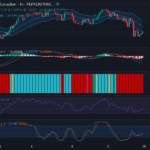
Wisconsin’s Voter ID Referendum: A Blueprint for National Election Policy Changes
Tháng 4 9, 2025
US Dollar vs Canadian Dollar: Examining Trend Shift Amidst Weakening Bearish Momentum – 10/04/2025
Tháng 4 9, 2025Overview of Recent Developments in U.S. Trade Policy Under President Trump
As the global economy continues to evolve, trade policies play a crucial role in shaping international relations and domestic markets. Recent tariff actions taken by President Donald Trump have sparked significant discussions regarding their implications for the United States and its trading partners. On April 2, 2025, President Trump issued an executive order that marked a pivotal moment in U.S. trade policy, introducing sweeping tariffs that could have lasting effects on the economic landscape.
Global Tariff Increase and Specific Country-By-Country Actions
Effective April 5, 2025, President Trump has imposed a notable 10% global tariff on all U.S. imports, signaling a move toward a more protectionist trade stance. In a significant escalation of trade tensions, this action is coupled with even higher tariffs for 57 specific countries listed in Annex I, where tariffs will range from 11% to an alarming 50% beginning April 9, 2025. This broad-based tariff strategy underlines the administration’s ongoing commitment to prioritize American industry and address perceived imbalances in global trade practices.
Moreover, the United States will levy sharper tariffs on nations identified as employing non-reciprocal trade practices. Notably, China faces a staggering 34% tariff, reflecting ongoing frustrations over trade imbalances and intellectual property theft allegations (see more about China’s trade strategies and international collaboration in this article: Three Strategic Moves by China Xi). Other countries also face steep tariffs, such as South Korea at 25% and Japan at 24%. These country-specific tariff rates underscore the Trump administration’s selective approach to trade, aimed at applying pressure on countries that do not align with U.S. trade objectives.
Exemptions, Retaliatory Measures, and Ongoing Challenges
In an effort to maintain some positive trade relationships, imports from Canada and Mexico that adhere to the United States-Mexico-Canada Agreement (USMCA) are exempt from these tariff increases. This exemption aims to reinforce regional trade cooperation, despite broader tensions. Conversely, the measures have provoked fierce retaliation from China, which has implemented its own matching tariffs on U.S. goods, thereby exacerbating the existing trade war.
Certain sectors have found relief from the new tariffs, as products like minerals and pharmaceuticals are exempted from the tax increases, indicating a nuanced approach to maintaining essential imports. However, the exemptions reflect the administration’s acknowledgment that some industries are vital for both economic stability and public health.
Despite these strategies, Trump’s tariff policy has not been without its detractors. Economists and industry leaders have expressed concerns about creating economic uncertainty, with some predicting significant repercussions for American consumers and businesses alike. As these tariffs come into effect, there is potential for legal battles regarding their legitimacy, alongside challenges from Congress, highlighting the contentious nature of trade policy within the current political landscape.
In essence, the recent developments in U.S. trade policy under President Trump epitomize a decisive shift toward protectionism, characterized by broad global tariffs, targeted country-specific rates, and a mixture of exemptions and retaliations. As the policy unfolds, the long-term consequences for both the U.S. economy and its trading partners remain to be seen, fostering ongoing discussions about the direction of American trade policy in a complex global market.
